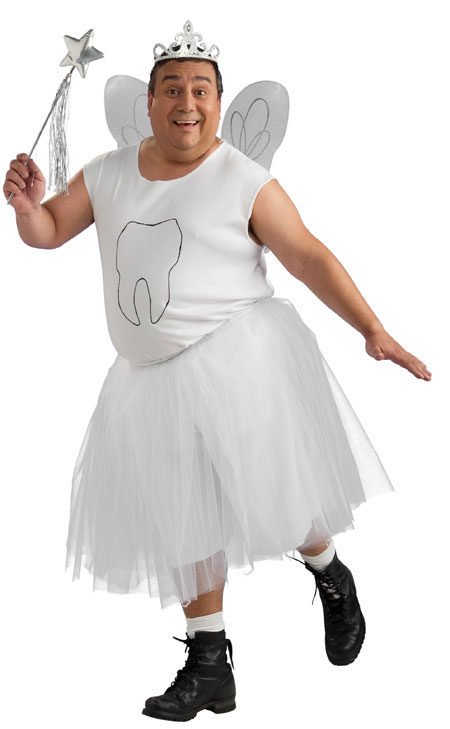Accounting
Tooth Fairy Inflation: Kids Now Receive Average of $3.25 Per Tooth
The tradition of the Tooth Fairy has been around since the early 1900s. Whereas some households might place an item like a toothbrush underneath a child's pillow after losing a tooth, the most popular ritual is leaving a monetary gift.
Apr. 11, 2018

One of the more exciting experiences as a child is losing your baby teeth. At first, you notice one of your teeth is a bit loose, then there is a wiggle, and then you anxiously await the next bite or movement that will finally set your baby tooth free.
Then the real fun begins.
[This article first appeared on the LendEDU blog.]
Because the only thing more exhilarating than losing a tooth is waking up to discover that some money has “mysteriously” appeared under your pillow.
The tradition of the Tooth Fairy has been around since the early 1900s. Whereas some households might place an item like a toothbrush underneath a child’s pillow after losing a tooth, the most popular ritual is leaving a monetary gift.
How has that monetary gift evolved from generation to generation? Are children today receiving more money from the Tooth Fairy then their parents did at the same age? If so, has that increase coincided with inflation in the United States?
LendEDU surveyed 1,238 Americans to answer these questions and understand how the average Tooth Fairy monetary present has evolved from the baby boomers to generation Z.
Infographic
Observations & Analysis
For this particular survey, LendEDU surveyed 400 baby boomers, 438 generation Xers, and 400 millennials. Since respondents had to have received money from the Tooth Fairy as children losing their baby teeth, we were able to uncover the average amount of money received per tooth by generation.
When applicable, we also asked respondents how much money they give per tooth to their children over the last five years, which gave us a statistic for generation Z as well.
So when it comes to cash gifts, how has the Tooth Fairy’s generosity evolved from the 1950’s to 2018?
Each passing generation received more money than the previous when they lost teeth as children. Respondents that were part of the baby boomer generation (ages 54 and up) received $0.69 per lost tooth from the tooth fairy compared to generation Xers (39-53), who received $1.39 per tooth.
That age group was succeeded by millennials (24-38), who received an average of $2.13 per tooth from the Tooth Fairy. Finally, generation Zers (six and up), who are the most recent generation to be losing teeth, have been getting a generous $3.25 for each lost tooth.
We were able to find a statistic for generation Z because we asked each generation of respondents if they had children and if they had acted as the Tooth Fairy within the last five years. The youngest members of generation Z are six, which is also the same age when one begins losing teeth.
Starting in the early 1950s and ending in 2018, it comes as no surprise that the average monetary gift distributed by the Tooth Fairy per lost tooth has risen with time. Everyone has heard a story or two from their grandparents about when a chocolate bar and a comic book was five cents.
That being said, LendEDU still wanted to put our survey numbers up against the U.S. Bureau of Labor Statistics’ inflation calculator to see how the rising price of a Tooth Fairy gift has coincided with inflation in the U.S.
As it turns out, older generations, like the baby boomers and generation Xers, were receiving a lot more money than younger generations, like millennials and generation Zers, when the average Tooth Fairy gift is adjusted for inflation.
When inflation is accounted for, the average amount of money received per lost tooth for millennials ($3.72) was closest to what generation Zers have been receiving ($3.25). The average Tooth Fairy gift for baby boomers of $0.69 would be $5.77 today, while generation Xers’ gift of $1.39 would be $5.54 today.
Methodology
All data found within this report derives from an online poll commissioned by LendEDU and conducted online by polling company Pollfish. For this survey, LendEDU polled 1,238 respondents currently residing in the United States. Specifically, 400 baby boomers (ages 54 and up), 438 generation Xers (between the ages of 39 and 543), and 400 millennials (between the ages of 24 and 38) were surveyed. These respondents were found via Pollfish’s age filtering feature. Respondents were first asked if they received money as a child when they lost each tooth. To find a statistic for generation Z, we asked all respondents if they have acted as the Tooth Fairy within the last five years.
Respondent answers were averaged together to produce the final statistics. This poll ran over a four day span, starting on Mar. 26, 2018 and ending on Mar. 29, 2018. All respondents were asked to answer each question truthfully and to the best of their ability.
LendEDU adjusted for inflation by taking the age right in the middle of each generation. For example, generation Xers are between the ages of 39 and 53, so we took the age of 46 to calculate inflation. Since the average human starts losing teeth at age six, we subtracted six from 46 (equals 40) and then subtracted 40 from 2018, which gave us the year 1978. Using the inflation calculator, we then were able to see what a $1.39 during January of 1978 would be worth in February of 2018, the most recent data available for the U.S. Bureau of Labor Statistics’ inflation calculator.
